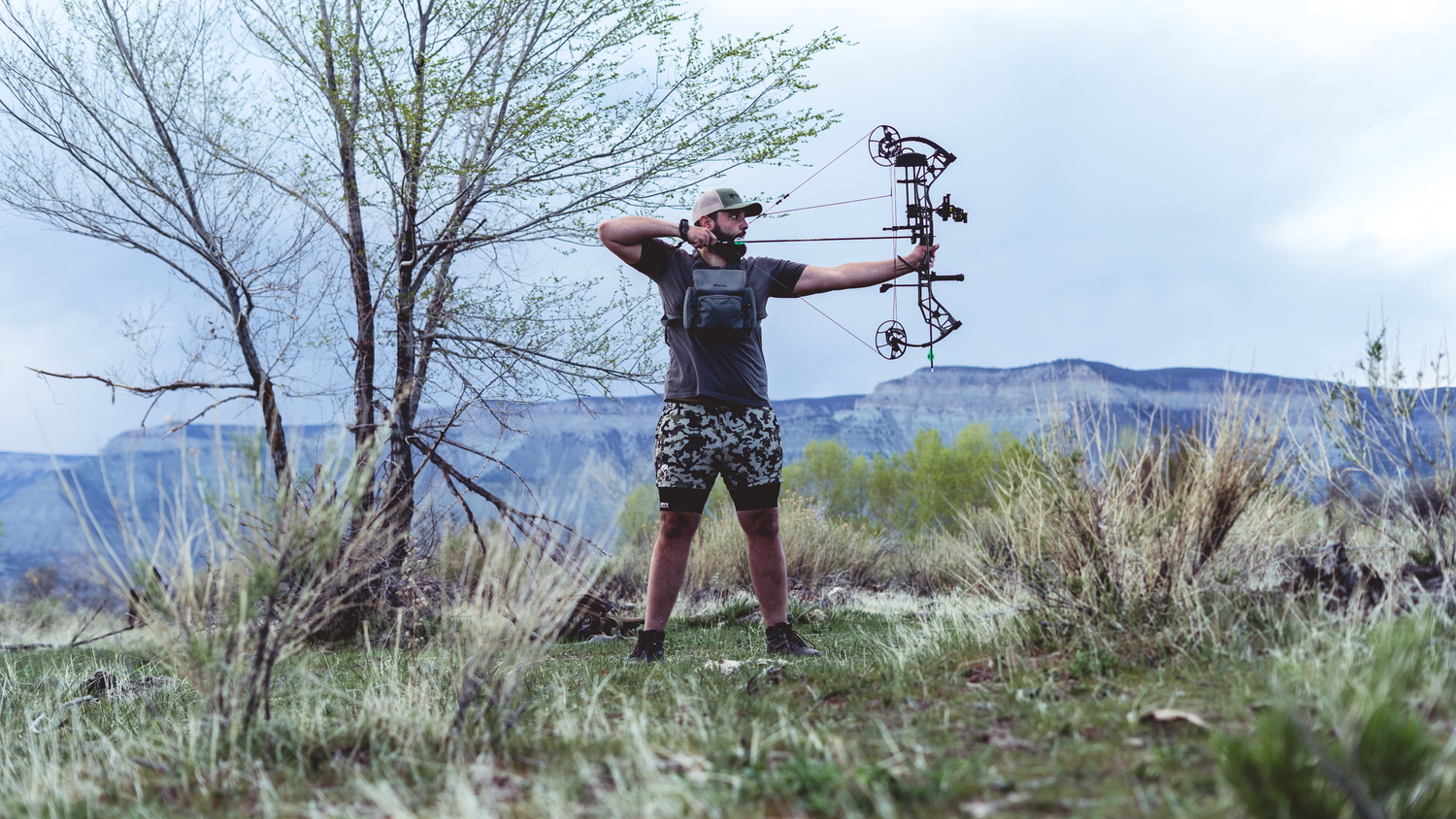You can have the best bow on the market and the most advanced optics—but without precision, none of it matters. Accuracy in archery isn’t just about gear; it’s about repetition, control, and composure under pressure. Whether you’re prepping for whitetail, elk, or western big game, these archery drills will tighten your groups and boost your confidence when it’s time to make the shot.
The Close-Range Blank Bale Drill
Stand 5–10 feet from a large target bale, close your eyes or turn off your sight pin, and shoot with complete focus on form. This drill strips away aiming to reinforce muscle memory, follow-through, and shot process. It’s especially effective for new archers or those rebuilding after poor habits.
How to Execute:
- Focus on grip, draw cycle, anchor, release, and follow-through.
- Repeat with 10–15 arrows per session.
- Film yourself to identify small mechanical flaws.
Controlled Breathing Drill
Nervous system control is critical under pressure. Practice breathing in for 4 seconds, holding for 2, exhaling slowly for 4, and then holding again before the shot. It helps slow your heart rate and keep you calm before release.
Why It Matters:
- Mimics the heart-rate spike before a shot at game.
- Teaches you to stabilize under stress.
- Builds discipline into your shot sequence.
Pro Tip: Sync your breath with your draw cycle to build consistency.
One-Arrow Focus Drill
Instead of flinging 10 arrows back to back, shoot just one arrow per round with full focus. Retrieve, reset, and repeat. It mirrors the pressure of a single shot in the field and sharpens intent.
Add Pressure:
- Time yourself.
- Simulate distractions or wind.
- Log every shot and note the mental state you were in.

Walk-Back Tuning Drill
Start at 10 yards and walk back to 50 in 10-yard increments, shooting from each distance. It exposes tuning or grip issues as you stretch your distance. Keep your grip and anchor consistent with each shot.
What It Reveals:
- Improper arrow spine or rest alignment.
- Inconsistent hand torque or anchor.
- Need for bow retuning or better posture.
Bonus: Record arrow groupings to spot patterns and make corrections.
Stress-Response Shooting
Do 20 burpees or a 400m run before stepping up to the line. Elevated heart rate simulates real hunting situations and tests your ability to make a clean shot when your body is under stress.
Add Variety:
- Mix in lateral shuffles or uphill sprints.
- Include a shot timer to simulate urgency.
- Shoot from kneeling or elevated positions.
Angle Drills for Tree Stand or Mountain Terrain
Real-world shots often come from awkward positions. Practice from elevated platforms or steep slopes. Use 3D targets for better shot placement awareness.
Benefits:
- Improves your ability to shoot downhill/uphill accurately.
- Helps recalibrate yardage and pin selection.
- Teaches body control and range compensation.
Pro Tip: Always bend at the waist—not the hips—to maintain alignment.
The Cold Shot Drill
Your first arrow of the day is often your most honest. Make it count. Step up cold—no warm-up, no stretch, no adjustment—and shoot as if it’s the real deal.
Why It Matters:
- Mimics a hunting shot when the moment surprises you.
- Builds pre-shot routine consistency.
- Exposes readiness gaps and mental rust.
Track It: Keep a cold-shot journal to evaluate your consistency over time.

Partner Pressure Drill
Train with a buddy. Add pressure by timing each other, distracting each other, or betting on who hits a vital zone more consistently.
Why It Works:
- Simulates social/mental pressure.
- Adds a layer of competition to boost focus.
- Helps train decision-making when someone is watching.
Optional Twist: Trash talk lightly. Get each other laughing—then regain composure and shoot.
Group Tightening Drill
Start with large targets at close range and gradually work toward tighter groupings on smaller targets at distance.
Drill Breakdown:
- Begin with a full-size target face at 20 yards.
- Once you group inside a paper plate, move to a coffee-can lid.
- Work your way down to 3-inch dots or poker chips at 40+ yards.
Result: Improved accuracy under pressure and better sight picture management.
Shot Process Journaling
After each session, jot down what worked and what didn’t. Include setup, distance, shot count, mental state, and any physical cues.
Benefits:
- Helps identify recurring issues.
- Creates a roadmap for improvement.
- Makes every session more intentional.
Tools: Use a simple notebook or a training app. Add photos or diagrams if needed.
Train in gear that mirrors the hunt. Check out our Threshold Training Shorts and Camo Shorts Collection—ideal for archers training with intent.








